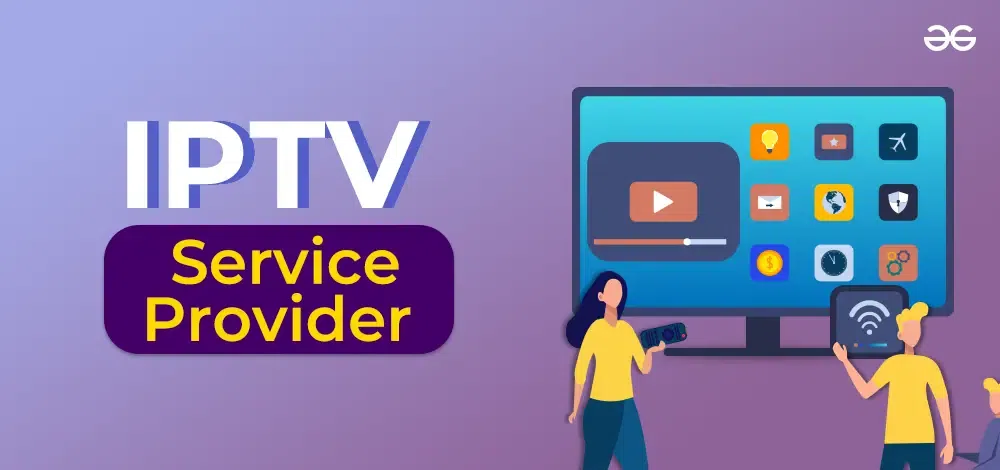Just How IPTV Works: A Step-by-Step Overview to Net Procedure Tv Innovation
Net Protocol Tv (IPTV) has transformed the means we consume television material, offering a new world of possibilities with the power of the net. From the essential concepts of IPTV to the complex procedure of content delivery, each step plays an essential role in making sure a seamless watching experience.
IPTV Basics
In comprehending IPTV fundamentals, it is critical to grasp the basic workings of this technology in delivering television web content over the net. IPTV, which represents Web Protocol Tv, makes use of Net Method (IP) networks to send television content to individuals' gadgets. Unlike standard approaches of transmitting tv web content via cable television or satellite signals, IPTV streams media with high-speed web links.

Furthermore, IPTV permits interactive abilities, such as video clip on need (VOD) and electronic program overviews (EPG), improving the user experience by supplying even more control and adaptability in accessing content. On the whole, understanding the basics of IPTV sets the structure for exploring its advanced functionalities and the benefits it supplies to contemporary television consumption.
Web Content Shipment Process
Reliable web content delivery in IPTV systems includes a well-structured process that guarantees smooth transmission of television content over IP networks. The content delivery procedure in IPTV begins with the production of the video content, which is then inscribed into digital layout appropriate for IP transmission. This encoded material is then securely saved on servers recognized as media web servers. When a visitor demands specific material, the IPTV system recovers the requested information from the media servers and supplies it to the viewer's tool online.

Middleware Performance
With the combination of middleware, IPTV systems gain boosted performance that streamlines customer communication and web content administration. Middleware works as a vital component that connects the void in between the interface and the back-end great post to read framework, facilitating seamless interaction and communication within the IPTV system. Among the key functions of middleware in IPTV is to allow tailored customer experiences by offering functions such as interactive program guides, video-on-demand solutions, interactive advertising, and user preferences management. By centralizing these functionalities via middleware, service providers can offer a much more dynamic and customized IPTV experience to their customers.

Device Compatibility
Offered the pivotal role of middleware in enabling seamless interaction and material management in IPTV systems, a critical facet to consider is the compatibility of devices used for accessing the IPTV solutions. Gadget compatibility is important for making sure a smooth customer experience and optimal efficiency when accessing IPTV web content.
In the context of IPTV, tool compatibility describes the ability of a tool to properly communicate with the IPTV solution, show material correctly, and support the essential protocols and codecs for streaming video web content over the net. Various tools, such as smart TVs, set-top boxes, smartphones, tablets, and computers, may have differing levels of compatibility with IPTV services.
To make certain a smooth watching experience, it is necessary for customers to pick gadgets that work with the certain IPTV service they are utilizing. Additionally, IPTV company need to supply support for a variety of gadgets to cater to the varied demands of their customer base. By prioritizing tool compatibility, both customers and company can boost the general IPTV Going Here experience.
Quality of Service (QoS)
Considering the vital role of preserving a high standard of performance and integrity in IPTV systems, making sure constant Top quality of Solution (QoS) remains a basic facet of the customer experience. QoS in IPTV refers to the ability of the system to supply content with minimal disruptions, high resolution, and fast filling times.
Solution providers use see post QoS devices such as website traffic prioritization, buffering, and error improvement to maintain a secure IPTV service. By focusing on IPTV web traffic over much less time-sensitive information, companies can guarantee smooth playback even during optimal use hours. Buffering assists compensate for network fluctuations, while error correction techniques improve information stability.
Continuous surveillance and optimization of QoS specifications are necessary to adjust to altering network conditions and customer demands. Ultimately, a robust QoS framework is crucial for delivering a seamless and satisfying IPTV experience to individuals.
Conclusion
In verdict, IPTV runs via the transmission of television web content over internet method networks. The innovation involves a methodical procedure of content shipment, assisted in by middleware functionality to make sure compatibility throughout various tools. High quality of Service plays a crucial role in preserving the effectiveness and integrity of IPTV solutions. Understanding the basic principles of IPTV is crucial for realizing the ins and outs of this cutting-edge television technology.